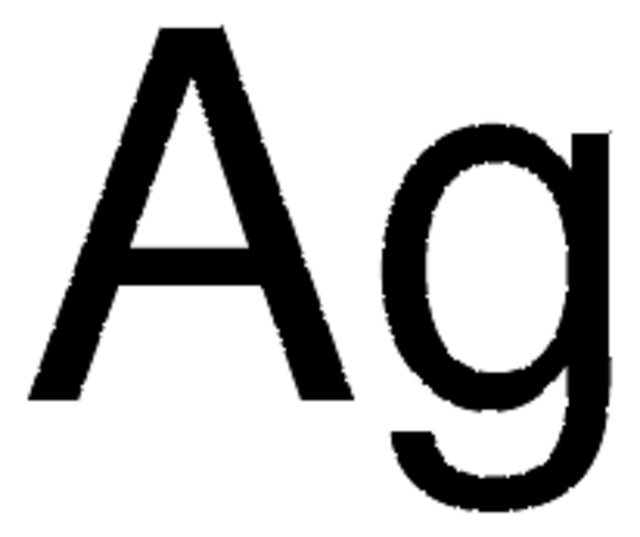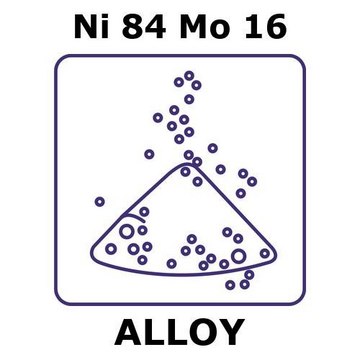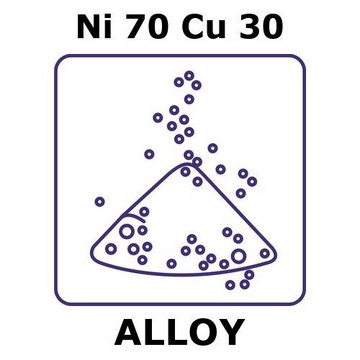GF29736692
Silver
rod, 100mm, diameter 3.0mm, as drawn, 99.997%
Synonym(s):
Silver, AG007912
Sign Into View Organizational & Contract Pricing
All Photos(2)
About This Item
Linear Formula:
Ag
CAS Number:
Molecular Weight:
107.87
MDL number:
UNSPSC Code:
12141740
PubChem Substance ID:
NACRES:
NA.23
Recommended Products
Assay
99.997%
form
rod
manufacturer/tradename
Goodfellow 297-366-92
resistivity
1.59 μΩ-cm, 20°C
L × diam.
100 mm × 3.0 mm
bp
2212 °C (lit.)
mp
960 °C (lit.)
density
10.49 g/cm3 (lit.)
SMILES string
[Ag]
InChI
1S/Ag
InChI key
BQCADISMDOOEFD-UHFFFAOYSA-N
Related Categories
General description
For updated SDS information please visit www.goodfellow.com.
Legal Information
Product of Goodfellow
Storage Class Code
13 - Non Combustible Solids
WGK
WGK 3
Flash Point(F)
Not applicable
Flash Point(C)
Not applicable
Regulatory Information
新产品
Choose from one of the most recent versions:
Certificates of Analysis (COA)
Lot/Batch Number
It looks like we've run into a problem, but you can still download Certificates of Analysis from our Documents section.
If you need assistance, please contact Customer Support.
Already Own This Product?
Find documentation for the products that you have recently purchased in the Document Library.
Neelam Gogoi et al.
Journal of nanoscience and nanotechnology, 14(6), 4147-4155 (2014-04-18)
In this work storage of silver nanoparticles (Ag NPs) in chitosan gel and its subsequent release for catalytic reduction processes is investigated. The generation of small sized metal nanoparticles which acts as catalyst is prerequisite to progress of a catalytic
Paulraj Kanmani et al.
Food chemistry, 148, 162-169 (2013-11-23)
Active nanocomposite films were prepared by blending aqueous solutions of gelatin with different concentrations of silver nanoparticles (AgNPs) using a solvent casting method. Formation of silver nanoparticles in the solution and films was confirmed with the surface plasmon resonance (SPR)
Takayoshi Kakuta et al.
Journal of nanoscience and nanotechnology, 14(6), 4090-4096 (2014-04-18)
Three-typed porphyrin derivatives with a different chain-length alkylcarboxylic acid as their peripheral anchor group have been prepared. Anodic photocurrents were observed in a simple system where the porphyrin derivatives were directly anchored on an indium tin oxide (ITO) electrode. Cathodic
Ana López-Serrano Oliver et al.
Environmental pollution (Barking, Essex : 1987), 189, 87-91 (2014-03-20)
Silver nanoparticles (AgNPs) are widely used in many applications and likely released into the aquatic environment. There is increasing evidence that Ag is efficiently delivered to aquatic organisms from AgNPs after aqueous and dietary exposures. Accumulation of AgNPs through the
Swarup Roy et al.
Journal of nanoscience and nanotechnology, 14(7), 4899-4905 (2014-04-25)
Binding interaction of biologically synthesized silver nanoparticles with bovine serum albumin (BSA) has been investigated by UV-Vis and fluorescence spectroscopic techniques. UV-Vis analysis implies the formation of the ground state complex between BSA and silver nanoparticles. The analysis of fluorescence
Our team of scientists has experience in all areas of research including Life Science, Material Science, Chemical Synthesis, Chromatography, Analytical and many others.
Contact Technical Service





